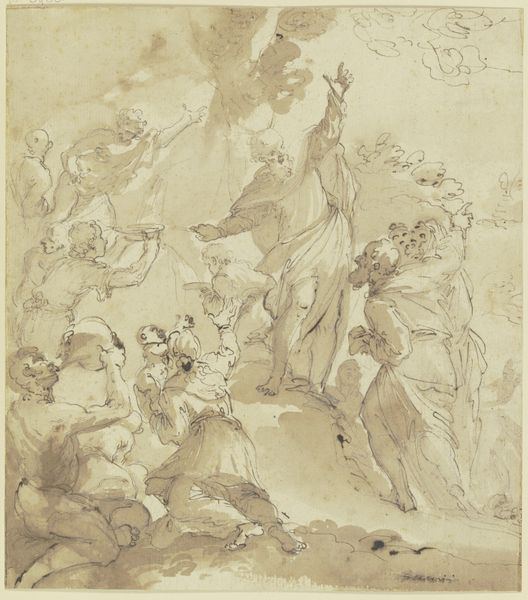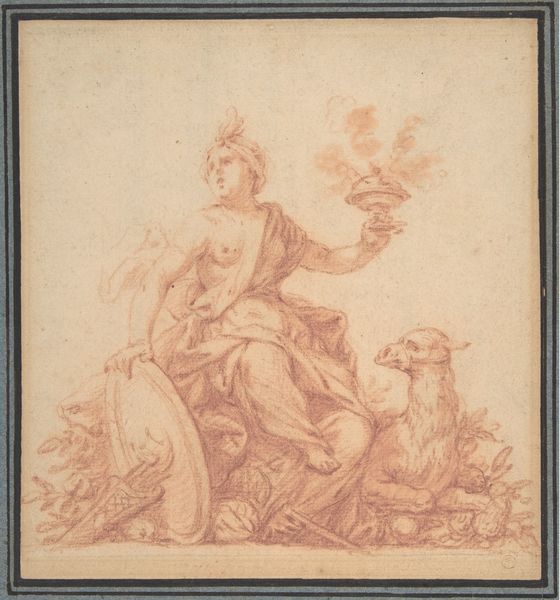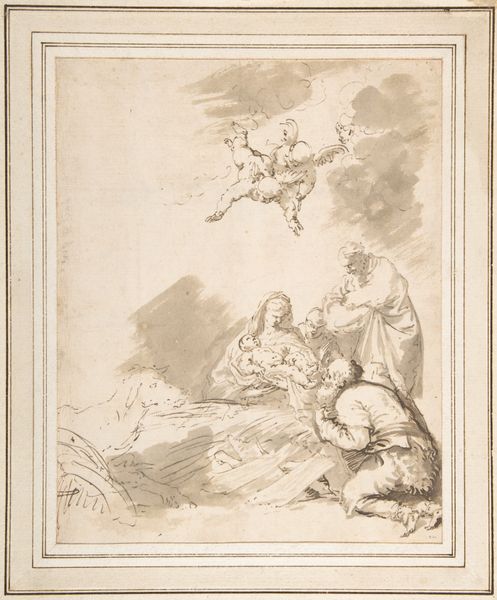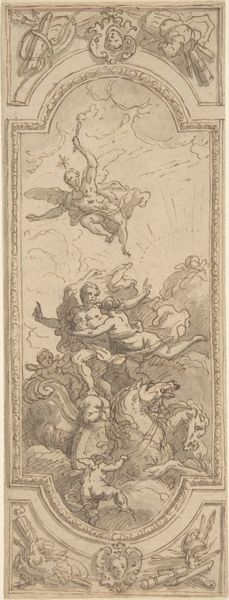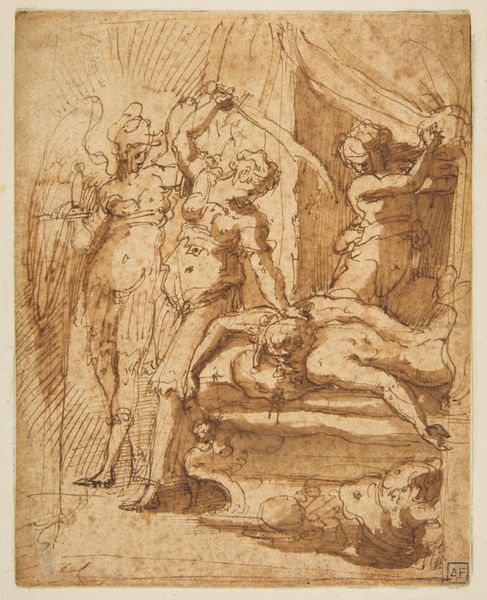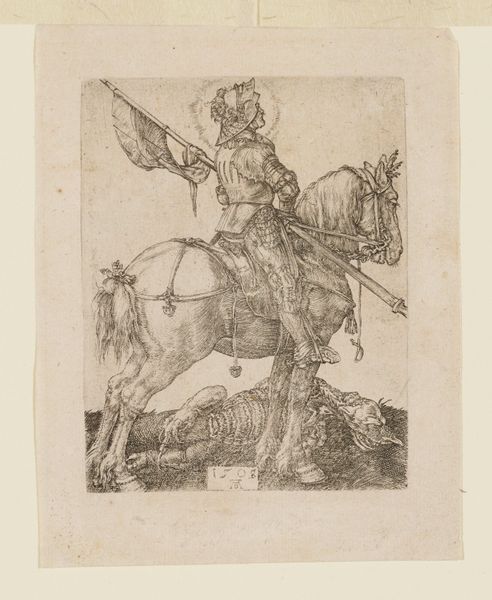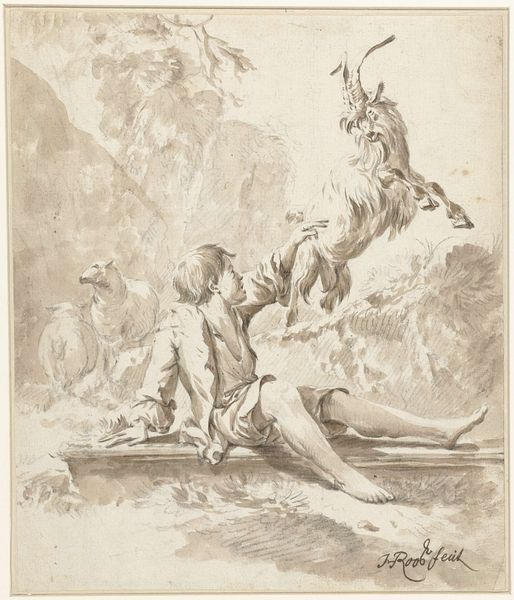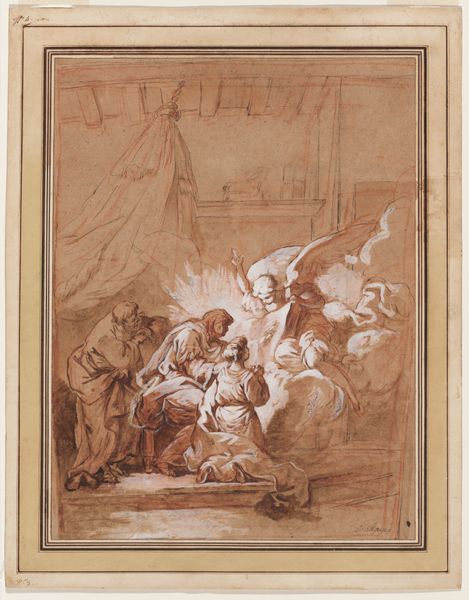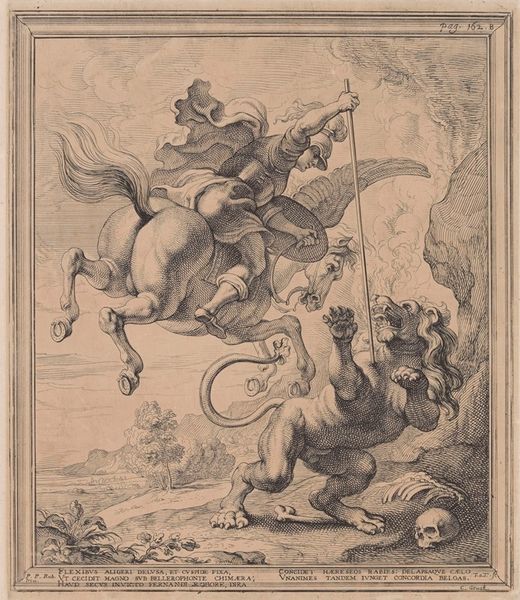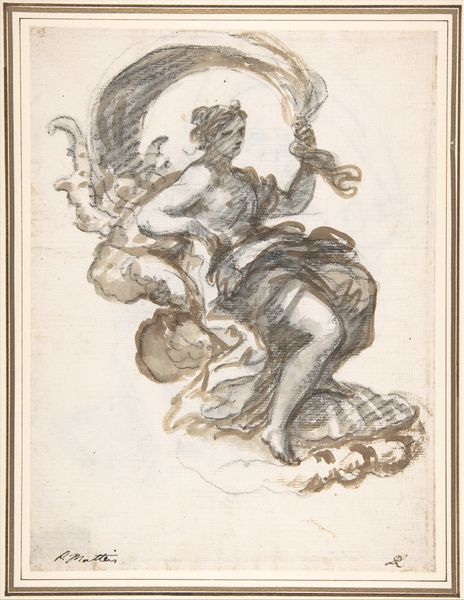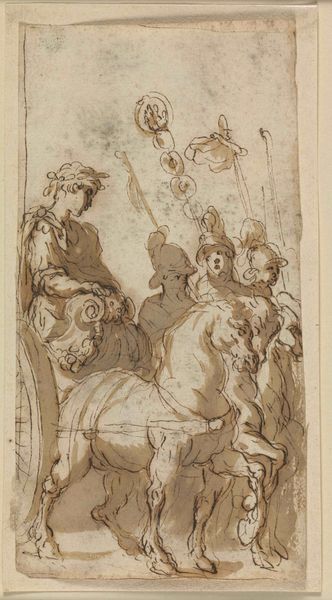
drawing, ink
#
drawing
#
allegory
#
baroque
#
ink painting
#
figuration
#
ink
#
history-painting
Dimensions: 163 mm (height) x 133 mm (width) (monteringsmaal), 129 mm (height) x 94 mm (width) (bladmaal)
Editor: Okay, so we’re looking at Charles Mellin’s “Allegorical Female Figure Seated on Clouds,” created sometime between 1600 and 1649. It's an ink drawing, and there's something quite majestic and ethereal about it, but I also find it a little… distant, I suppose. What do you see in this piece? Curator: I see a reflection of the era’s fascination with power and idealised virtue, mediated through classical allegory. Consider the socio-political climate of the 17th century: Europe was embroiled in religious and political conflict. Art became a tool to communicate specific messages, and this piece would have been no exception. Editor: So you're saying that this figure wasn't just meant to be pretty? Curator: Exactly. Ask yourself, why is she seated on clouds? What does the scepter in her hand signify? Why the presence of putti or cherubs? These aren't arbitrary choices. Mellin, working within the conventions of Baroque art, constructs a visual argument. The allegory elevates the figure, lending her a divine authority. Editor: That makes sense. It feels like this is supposed to be seen not just as art, but as…propaganda, almost? A statement about ideal leadership perhaps? Curator: It very well could be. The patronage system influenced artists; their creations reflected, consciously or unconsciously, the power structures of the time. How the work would function in the museum context now – very different, I imagine! Editor: It's fascinating to think about the intended audience versus who views it now, centuries later. It makes me consider my own perspective and biases. Thank you for enlightening me! Curator: My pleasure! Reflecting on the artwork and its journey over time is key to fully appreciating its layers of meaning and impact.
Comments
No comments
Be the first to comment and join the conversation on the ultimate creative platform.
